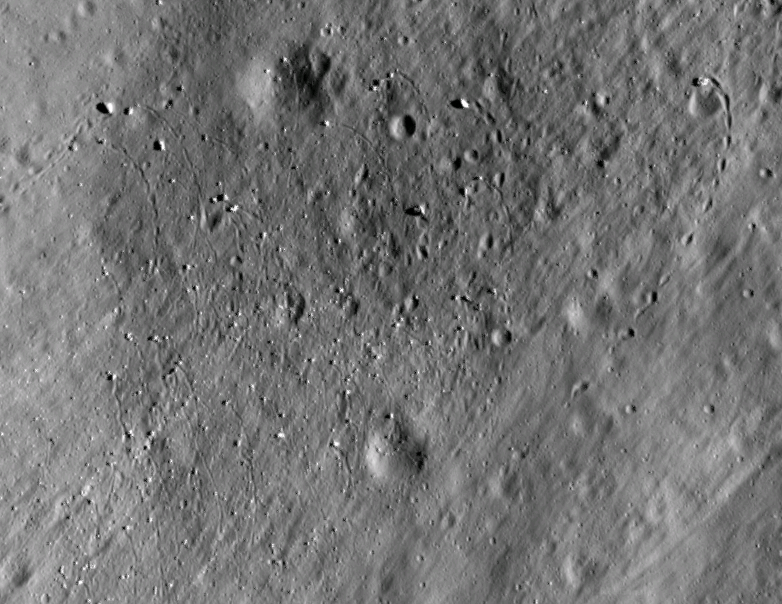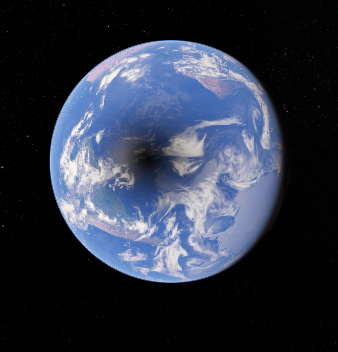Rolled Boulders on the Moon
 Sat 2022-03-05
Sat 2022-03-05 
While looking for the Apollo 16 landing site on Google Maps I came across this field of boulders which have rolled down a slope leaving curved tracks behind them. The largest of the rolled boulders seem to be 1 to 2 metres across. You can find them at https://www.google.co.uk/maps/space/moon/@-9.1114261,15.4352907,1547m/data=!3m1!1e3. If you enter 3D view (only available if you are signed in to Google) you will see that the high ground is in the bottom right.
Now I come to think about it, the fact that the tracks are intermittent and curved makes me think the boulders weren't rolling but bouncing, having been ejected by an impact out of picture to the lower left. This would explain why in the right-most track the gap between the bounces decreases and the direction of the track converges on the downward direction of the slope as the boulder loses momentum with each bounce.
Back in the late 1960's and early 1970's certain amateur astronomers would order prints from NASA of the Orbiter and Apollo photos of the Lunar surface and then subject them to microscopic scrutiny looking for interesting features like this (but I suspect they were really looking for alien artefacts).



